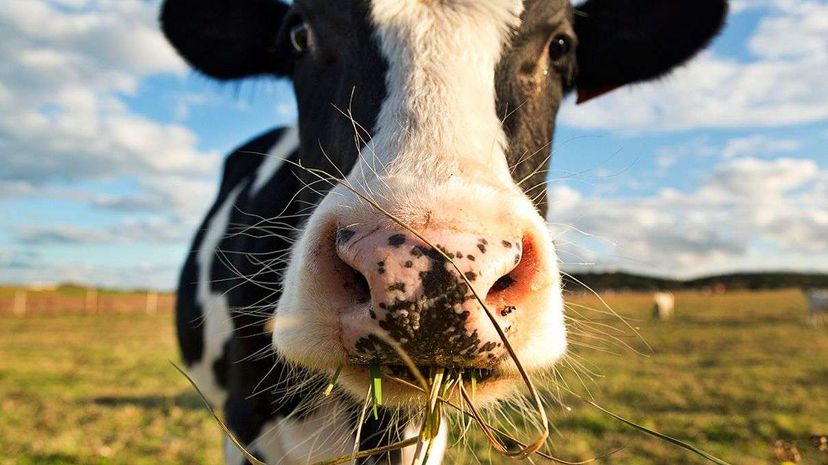
In the war against climate change, scientists are scrambling to put a cap on one of the most potent sources of greenhouse gas: burping cows. Incredibly, belching bovines produce 26 percent of U.S. methane emissions related to human activities, second only to natural gas production (29 percent).
Carbon dioxide is the ultimate “bad guy” of climate-warming greenhouse gases, but it has serious competition from methane. There is far more CO2 in the atmosphere than methane — 395 parts per million compared to 1,800 parts per billion — but pound for pound, methane is 25 times more efficient than CO2 at trapping the atmospheric radiation that fuels global warming.
Advertisement
Contrary to the (admittedly fun) myth that “farting cows” cause climate change, 96 percent of bovine-based methane comes from the front end. In cows, methane is a byproduct of enteric fermentation, the digestion of grasses and grains in the cow's microbe-packed rumen. The more methane generated in the rumen, the more a cow burps.
Not only does burped-up methane damage the environment, it also decreases the amount of net energy absorbed by the cow when it eats. If scientists can figure out a way to lower methane levels in the rumen, it'll be a double-win: less greenhouse gas and fatter cows!
We know that diet plays a huge role in controlling methane levels in cows. The more digestible the feed, the less methane is burped back up. But researchers are also tinkering with chemical additives that inhibit methane production.
In a recent issue of the Proceedings of the National Academy of Sciences, researchers from Penn State University published impressive results using the feed additive 3-nitrooxypropanol (3NOP), which not only decreased methane emissions by 30 percent, but also increased the cows' body weight by 80 percent on average over the control group. All this in a 12-week period.
Which left us with an interesting question: How the heck do you measure how much methane is in a cow burp?
Time for a chat with Patrick Zimmerman, veteran environmental scientist and inventor of GreenFeed, a nifty emissions monitoring device engineered for animals. Zimmerman's family-run company C-Lock Inc. ships GreenFeed emissions monitoring systems to universities and research farms on five continents, including the Penn State lab that tested 3NOP.
Here's how it works. GreenFeed is basically an automated feeder equipped with a fume hood armed with 18 separate sensors. When a cow approaches the feeder, a scanner reads its radio-frequency identification (RFID) ear tag. If it's time for that cow to feed, a bell sounds and a portion of pelletized food is released into the bin. (If it's too soon for the cow to eat, the animal quickly learns that no bell = no food.)
As the cow munches away, high-efficiency fans force localized air — including juicy burps — into the hood and across the sensors. The machine continues to portion out food pellets as long as the cow keeps its head in the right position to collect data. Second-by-second (burp-by-burp) measurements of methane and CO2 levels are recorded in an onboard computer and uploaded to the cloud for analysis.
The high-tech feeders are popular with academic researchers and also large dairy operations that experiment with different feed sources to maximize food efficiency by minimizing methane emissions.
Advertisement